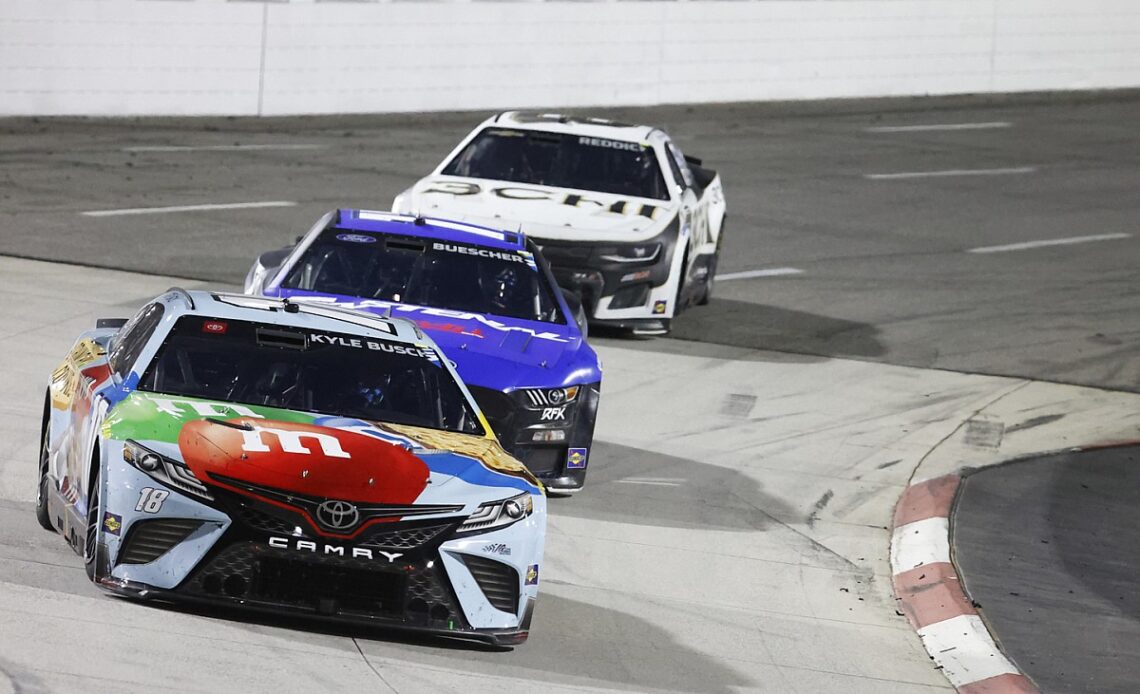Short track races at Richmond, Va., and Martinsville earlier this season with the Next Gen car surprisingly produced lackluster racing.
The Richmond race turned into a tire strategy affair as the lack of cautions (five total, including two stage breaks) and multiple green-flag pit stops left much of the field strung out.
The Martinsville saw only four cautions (two for stage breaks), five lead changes and a round of green-flag pit stops – something usually unheard of on the ½-mile track.
Following that race, NASCAR announced it would conduct both a tire test and an organizational test before the series returned in the fall. The organizational test is scheduled for Aug. 23-24.
A ‘net positive’ found
During the tire test this week, the three drivers – Austin Cindric, Kyle Busch and Tyler Reddick – tried several different tire compounds.
They also utilized a plastic underbody on the cars and removed the rear diffuser extensions, similar to how the car is utilized for the series’ annual dirt race.
It was the latter change the drivers seemed to notice most.
“So, the Bristol dirt aero kit, let’s call it, the bottom pan area. I felt like that was a net positive,” Busch said. “We were able to get into a traffic setting situation where we started a race and kind of run around each other a little bit.
“The No. 2 car (Cindric) was a little better than us at that point. So he was able to get by me but when I could follow him I follow like he was on my bumper following me. I got on his bumper following him.
“He drove away just due to the fact that he was a little bit better than us at that point in the test, but I felt like that was a net positive.”
Reddick agreed.
“The underbody stuff that was tried certainly helped the situation. We are just missing the racing product a little bit, I think,” he said.
“Still, at the end of the day, the cars have a lot of grip at the short tracks and I don’t think we have enough power to rip the tires off if we make that mistake.”
Different tire compounds
Busch didn’t believe any of the tire compounds made much difference, particularly since there was a vast temperature change from this week’s test (90s) and the race conditions at Martinsville in April (40s).
“There was no wear. And so with the control tire that we had, we would have some fall-off, but you could kind of recover your fall-off if you just took it easy for a couple laps and let it cool back down. Then re-attacked and we went.
…
Click Here to Read the Full Original Article at Motorsport.com – NASCAR – Stories…

